You’re being watched.
Our age was already Orwellian, thanks to monitoring by iPhones, laptops, Alexas and CCTV cameras. Now, improved facial recognition technologies have upped the ante, giving governments the ability to pull your face or mine out of a crowd and come knocking at our doors.
So, how does one thwart the surveillance state?
Makeup!
Eyeshadow, foundation and lipstick aren’t just tools for covering up your spots and making your eyes pop. They’re also a means of facing down Big Brother.
So-called “dazzle makeup” draws on the use of dazzle camouflage of warships in the Second World War. The ships were painted in black-and-white zig-zag patterns to make it hard to ascertain whether they were coming or going. The original intent wasn’t meant to hide, but to confuse.
The idea with dazzle makeup is to confound facial recognition software. Developed in 2010 by designer Adam Harvey, CV dazzle makeup “works by altering the expected dark and light areas of a face (or object) according to the vulnerabilities of a specific computer vision algorithm.”
In other words, the stripey lines and blocks of colour in dazzle makeup break up the planes of the face to thwart the software.
In major surveillance centres like London, groups of people get together, paint themselves up and go for walks, all under the watchful eyes of CCTV cameras.
The so-called dazzle walks aren’t so much intended to actively disrupt surveillance systems just yet, but to make a point about how much the general public is subject to unwanted and unwarranted invasions of personal space.
While cities like London and Hong Kong are at the forefront of implementing massive surveillance systems, even here in little old Canada the technology is being put to active use. The Vancouver airport will be the first Canadian transit hub to adopt facial recognition software as part of the Nexus program.
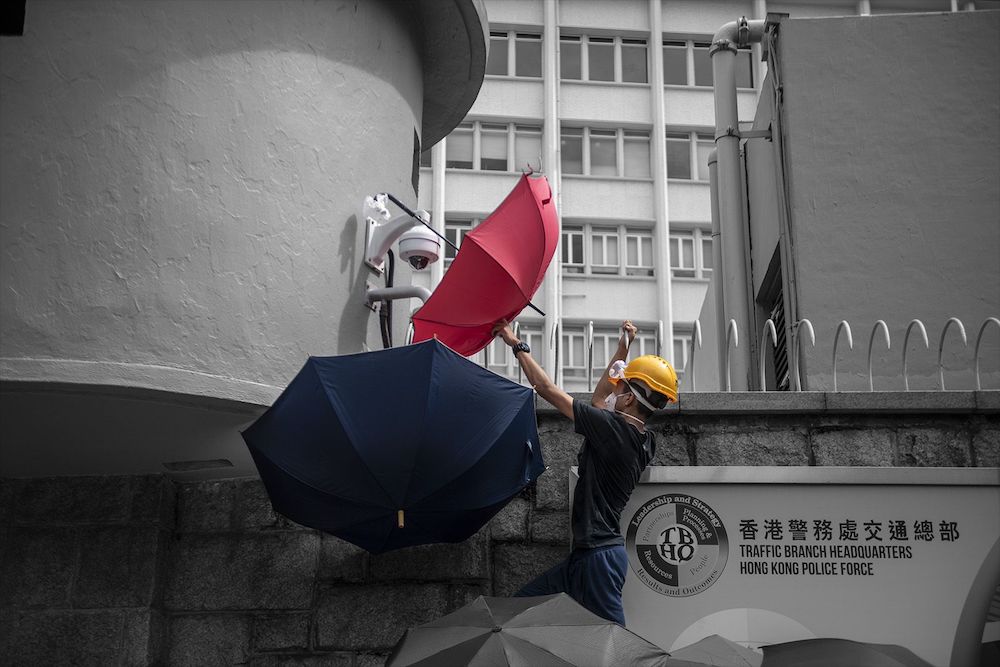
So, what’s the problem with facial recognition surveillance, you may ask?
Unlike other biometric markers like fingerprints or retinal scans used for identification purposes, facial recognition can be done at a distance without the person even knowing they’re being surveilled, much less giving their consent or permission. In less-than-benign hands, the results can be catastrophic. There are allegations that the Chinese government made active use of its mass-surveillance network in order to target Uighurs, China’s ethnic Muslim people.
Advocates for privacy and freedom of expression argue that surveillance programs are also being implemented without sufficient transparency or even much public discussion at all.
A recent article in the Ottawa Citizen voices these worries about facial recognition technology part of the Nexus program:
“What is happening to Nexus members today is less concerning than how government will use the lessons in future. It isn’t hard to see those lessons being generalized into a mandatory facial recognition program for all travellers at the borders. This could hurt marginalized groups and have a chilling effect on freedom of speech, as those who participate in marches or protests may be more easily tracked and their entry at a border restricted. Governments should not model their privacy policies after the private sector, they should set a new, higher bar.”
So governments who aim to control their citizens have access to an incredibly powerful tool. Makeup might seem a paltry weapon against powerful algorithms, but it’s an easy, accessible and fun form of guerrilla resistance. Plus, the colourful squares, squiggles and stripes have a certain New Wave charm. Fool Big Brother and look cute while doing it!
The struggle will only progress, as does the tech. Surveillance has expanded from passive watching to active targeting, noted a Guardian podcast, and capabilities are fast evolving. Alex Hern, the Guardian’s tech columnist took a quick selfie of the podcast’s host Anushka Asthana; feeding it into Yandex.com, the Russian equivalent of Google; and doing a reverse image search. Asthana was identified within seconds.
As Hern explains, the Yandex search engine makes use of a specific form of A.I. and is able to reverse search across its entire database in order to identify people. Anyone can upload an image, taken anywhere at any time, and instantly know who you are. This is facial recognition in action.
The technology can be used to pre-emptively remove known troublemakers but easily tip over into the erosion of personal privacy. It isn’t simply about identifying the bad guys, as Hern says, but subjecting everyone to ubiquitous and unwanted scrutiny. The technology is far from perfect, and in fact, as Hern notes, “The robots are racist.” He cites the story of NFL players being fed into Amazon’s ReKognition facial recognition program, which misidentified many of the players as criminals.
And when UCLA was considering installing facial recognition surveillance on its campus, Fight for the Future ran a campaign to further demonstrate the bias built into the technology. It used facial recognition technology on hundreds of photos of UCLA faculty members and athletes and “found the software incorrectly match 58 of those with photos in a mugshot database. The majority of those misidentified by the database were people of colour.”
So, how can we rebel against our racist robot overlords and fool facial recognition?
First, make it difficult for a computer to see your face. Enter dazzle makeup with its futuristic hairstyles and makeup techniques. If you can pull off a blue square over one eye and giant polka-dots all over your face, then go for it.
But there are other methodologies as well. In an article in Document, further strategies include wearing bandanas, balaclavas, hoodies, and even decoy faces to avoid identification.
In addition to being sophisticated, according to Wired, these items are also very much fashion forward: “A pioneer of anti-surveillance fashion, designer Adam Harvey has devised a line of anti-drone hijabs and hoodies, which contain shiny fabrics to offset overhead thermal surveillance.”
Many of these hoodies could easily have sauntered off fashion catwalks, but they speak to an embattled future wherein ordinary people are forced to adopt any number of different methods to maintain some semblance of freedom.
The face-off between colourfully painted activists and facial recognition technology will be ongoing (dazzle makeup patterns must be constantly changed and updated in order to outflank the surveillance software). Still, there is something incredibly defiant about flouting the authorities with bright eyeshadow and lipstick.
But while Dazzle makeup might offer a protective shield between activists and authorities with its ‘80s redux look, it’s only a temporary measure.
Before the state’s power to track and monitor ordinary citizens does truly spiral out of control, the conversation needs to be had about how much privacy we’re willing to give up in the name of security.
In the meantime, I am privately scanning the streets of Vancouver, looking to spot anyone wearing a face full of dazzle. I’m in search of the new face of freedom. ![]()
Read more: Science + Tech




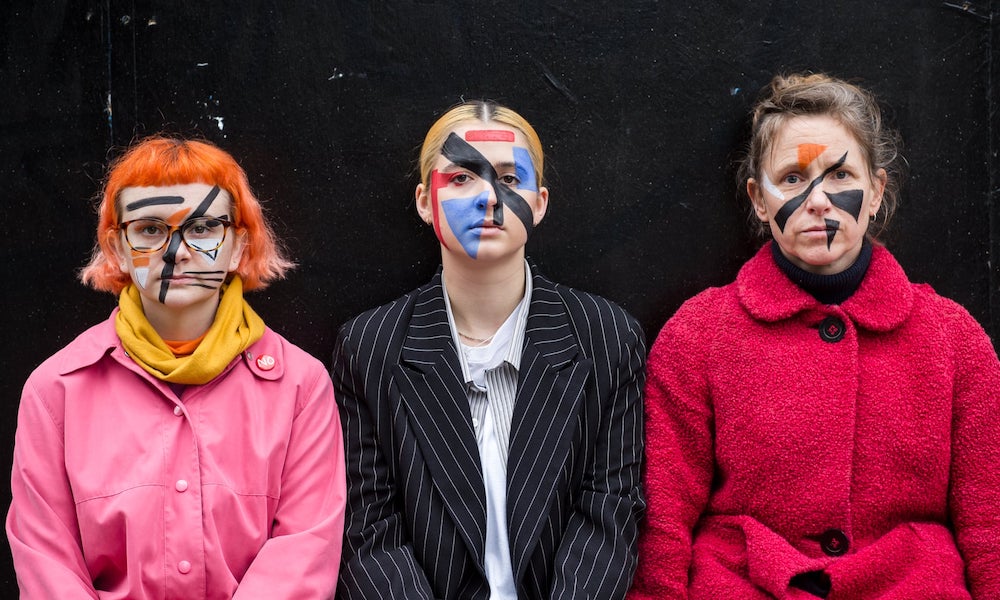
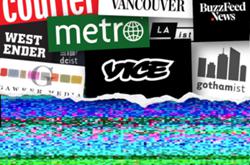




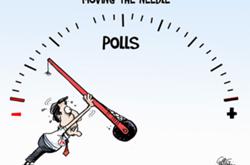




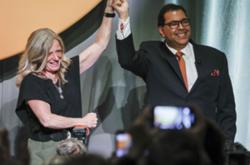

Tyee Commenting Guidelines
Comments that violate guidelines risk being deleted, and violations may result in a temporary or permanent user ban. Maintain the spirit of good conversation to stay in the discussion.
*Please note The Tyee is not a forum for spreading misinformation about COVID-19, denying its existence or minimizing its risk to public health.
Do:
Do not: